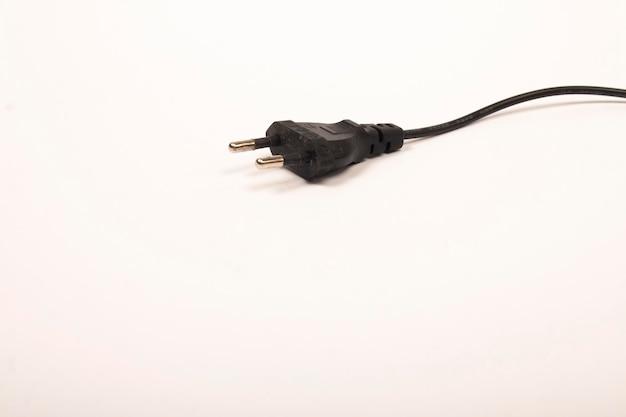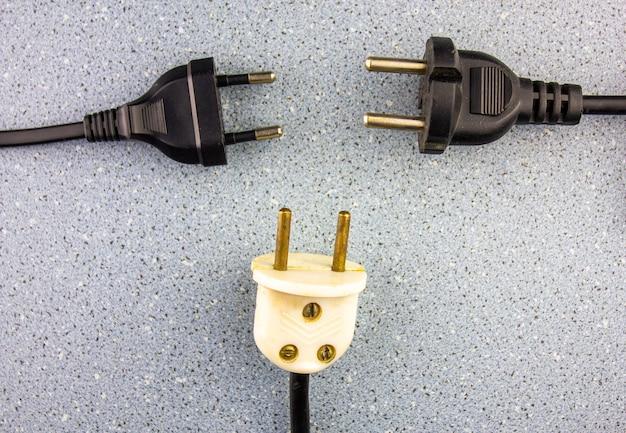Are you faced with the task of wiring a three-prong plug and wondering which wire goes to the wide prong? Look no further! In this blog post, we will unravel the mystery behind the wiring of a three-prong plug and provide you with the essential knowledge you need to get it right.
When it comes to electrical wiring, it’s crucial to understand the purpose of each wire and which parts they connect to. In this informative guide, we’ll answer common questions like “Does the black wire go on the gold screw?” and “What color wire is hot?” We’ll also explain why the prongs on a plug differ in width and the consequences of wiring an outlet incorrectly.
So, whether you’re a DIY enthusiast or simply want to gain a better understanding of electrical wiring, join us as we demystify the process of wiring a three-prong plug and ensure you get it right the first time. Let’s dive in!

Which Wire Goes to the Wide Prong
When it comes to electrical wiring, it’s important to get things right. One common question that many people have is, “Which wire goes to the wide prong?” Well, fear not, because I’m here to shed some light on the subject (pun intended)! Let’s dive into the nitty-gritty of it all.
Understanding the Wide Prong and Its Purpose
The wide prong on an electrical plug is actually the neutral prong. It is wider than the other prong to ensure proper polarization and prevent electrical shocks. The purpose of the neutral wire is to complete the circuit and provide a return path for the current. That’s why it’s crucial to connect the right wire to the wide prong.
Differentiating between the Wires
Now, you might be wondering, “How do I know which wire is which?” Well, the good news is that it’s not as complicated as it may seem. In most cases, electrical wires are color-coded to make identification easier.
The Black Wire
The black wire is typically the hot wire, which carries the current from the power source to the device you’re connecting. It’s like the messenger of electricity, always in a hurry to get things done! So, what do we do with this energetic wire? Well, you’ll connect the black wire to the narrower prong of your electrical plug.
The White Wire
On the other hand, the white wire is the neutral wire we mentioned earlier. Its purpose is to complete the circuit and bring the current back to the power source. Think of it as the calm, zen-like wire, ensuring a smooth flow of electricity. You’ll connect the white wire to the wide prong of your electrical plug.
A Little Extra Wire
Wait, there’s more! Sometimes, you might come across an extra wire in your electrical setup. This wire is usually green or green with yellow stripes. Don’t fret – this is just the ground wire. Its job is to safeguard you from electrical shocks by providing a safe path for excess electricity. It’s like having a superhero standing guard, ready to protect you. The ground wire is connected to a separate terminal or a rounded prong on your plug.
Safety First, Always!
Remember, working with electricity requires caution and respect. Before touching any wires, make sure to turn off the power at the circuit breaker or fuse box. If you’re uncertain about any aspect of electrical wiring, it’s best to consult a professional electrician. They’ll ensure everything is connected correctly and safely.
So, there you have it! Now you know which wire goes to the wide prong and why it’s important. Stay safe and keep those electrons flowing in the right direction!

FAQ: Which wire goes to the wide prong
Introduction
In the vast world of electrical wiring, figuring out which wire goes where can sometimes feel like solving a complex puzzle. And when it comes to the wide prong on a plug, it can be especially confusing. But fear not! We’ve got you covered with this comprehensive FAQ guide. So, let’s dive right in and unravel the mysteries of the wide prong!
Does the black wire go on the gold screw
Ah, the age-old question. No, the black wire does not go on the gold screw. In fact, the black wire is usually the hot wire, and it typically goes on the brass-colored screw. Remember, “black goes with brass!”
What color wire is hot
The wire color coding can vary, but in most cases, the black wire is the hot wire. It carries the electrical current from the power source to the device you’re connecting. So, if you see a black wire, tread carefully—it’s hot!
When wiring a three-prong plug, what color of wire goes to which screw
Great question! Let’s break it down:
- Black wire: This is the hot wire, so it goes to the brass-colored screw.
- White wire: This is the neutral wire, and it goes to the silver-colored screw.
- Green or bare wire: This is the ground wire and it goes to the green screw or the screw with a grounding symbol.
Remember, safety should always be your top priority when working with electricity!
What wires go on a three-prong plug
When dealing with a three-prong plug, you’ll typically find three wires:
- Black wire: The hot wire.
- White wire: The neutral wire.
- Green or bare wire: The ground wire.
Each of these wires serves a crucial role in ensuring the safe operation of your electrical devices.
Is the large prong black or white
Here’s the inside scoop: the color of the prongs does not dictate their function. In most cases, the large prong can be either black or white. So don’t let the color fool you—instead, focus on understanding the purpose of each wire.
Which wire goes to the big prong
Ah, the big prong, a source of confusion for many. The wire that goes to the big prong is the neutral wire, which is typically colored white. So remember, “white connects with the might of the big!”
Which wire goes to the wide blade
That’s a sharp question! The wire that goes to the wide blade is the neutral wire, usually white. So keep your sights on the wide blade when connecting those neutral wires!
Which screw does the black wire go to
Good eye—now we’re screwing things together. The black wire, being the hot wire, typically connects to the brass-colored screw. So go ahead, give that black wire a cozy spot on the brass screw!
Why is one prong wider on a plug
Ah, the wide prong—the glorious oddity that catches our attention. The reason for one prong being wider is to maintain proper polarity when connecting devices. It ensures that the hot wire is always connected to the correct terminal, promoting safety and preventing potential mishaps.
Where does the black wire go on a plug
The black wire, being the hot wire, usually finds its home on the brass screw of a plug. Just remember, “black and brass—let them party!” with your electrical connections.
How do you wire a three-prong 220 plug
Wiring a three-prong 220 plug involves understanding the specific wiring requirements. Here’s a simplified breakdown:
- Connect the black wire (hot wire) to the brass screw.
- Connect the white wire (neutral wire) to the silver screw.
- Connect the green or bare wire (ground wire) to the green screw or the screw labeled with a grounding symbol.
Always refer to the instructions or consult a professional electrician when dealing with 220-volt connections.
Does the ribbed wire go to black or white
When it comes to ribbed wires, they are typically associated with the neutral wire, which is typically white. So, in most cases, the ribbed wire should be connected to the white wire. Stay ribbed and wired right!
Does the black wire go to the copper screw
Ah, the copper screw, a shiny temptation. But resist the urge to connect the black wire to it! The black wire, being the hot wire, should usually go to the brass-colored screw, not the copper screw. Keep your connections safe and sound by following this golden rule!
Which side of the plug is neutral
The neutral wire is not specific to one side of the plug. In most cases, the neutral wire can be connected to either the wider or the narrower prong. So focus on identifying the correct wire, rather than fixating on the plug’s sides!
Does it matter which wire goes where on an outlet
Yes, it does! The correct wiring configuration ensures the safe functioning of your electrical devices. Swap the wires, and chaos may ensue. So, remember to follow the manufacturer’s instructions or consult an expert to avoid any sparks of trouble!
Is the wide plug positive or negative
The width of the plug prongs does not determine their polarity. Whether a prong is wide or narrow, its function is based on the specific wire it’s connected to—hot (positive), neutral, or ground. So, don’t judge a plug by its prong size!
Which color wire goes to which prong
Let’s color-code the wire-party:
- Black wire: The hot wire, which usually connects to the brass-colored screw or the narrower prong.
- White wire: The neutral wire, typically connected to the silver-colored screw or the wider prong.
- Green or bare wire: The ground wire, finding its place on the green screw or the screw labeled with a grounding symbol.
Remember, understanding wire color coding ensures you’re the life of the electrical party!
What happens if I wire an outlet backwards
Reversing the wiring of an outlet can lead to a flip-flopping mess. It can lead to potential damage to your electrical devices, or worse, create safety hazards. So, take a moment, wire it right, and avoid the shocking consequences of an incorrectly wired outlet!
How do you wire a two-prong polarized plug
Ah, the two-prong polarized plug—simpler in design, but still important to wire correctly. Follow these steps:
- Connect the smooth wire (hot wire) to the narrower prong.
- Connect the ribbed or ridged wire (neutral wire) to the wider prong.
Keep those polarized plugs correctly connected, and let the electricity flow in the right direction!
Does the hot wire go to the wide prong
No, the hot wire typically does not go to the wide prong. In most cases, the hot wire connects to the narrower prong. So, remember to keep the hot wire away from the wide prong and play it safe with your electrical connections!
Is the wide blade hot or neutral
The width of the blade does not indicate its electrical function. The wide blade can be connected to either the hot or neutral wire, depending on the specific wiring configuration. So, stay sharp and focus on the wire color, not the blade width!
Why do plugs have two holes in the prongs
Oh, those mysterious holes in the prongs—they serve a vital purpose! Those holes are designed to accommodate a grounded plug, allowing for a secure connection with the grounding system. Safety first, even in the tiniest details!
Which is the hot wire—ribbed or smooth
The smooth wire usually takes the spotlight as the hot wire, carrying the current and bringing the heat. So, leave the smooth-talking to the hot wire and ensure it’s connected safely, while the ribbed wire, often the neutral wire, gets a supporting role!
And there you have it—a comprehensive FAQ guide to help you navigate the wide prong wonderland! Remember, always prioritize safety, double-check your specific wiring instructions, and, if in doubt, consult a qualified electrician. Happy wiring!